
Code: 01625428
Monetary Policy and Exchange Rate Volatility in a Small Open Economy
by Jonas Böhmer
Seminar paper from the year 2008 in the subject Business economics - Economic Policy, printed single-sided, grade: 1,3, University of Bonn (Wirtschaftspolitische Abteilung der Rechts- und Staatswissenschaftlichen Fakultät), course ... more
- Language:
 English
English - Binding: Paperback
- Number of pages: 40
Publisher: Grin Verlag, 2009
- More about this

34.91 €
RRP: 35.62 €
You save 0.71 €

In stock at our supplier
Shipping in 19 - 25 days
You might also like
-

Lingua latina per se illustrata : exercitia latina I
12.20 € -

Songs of Innocence and of Experience
12.91 € -22 % -
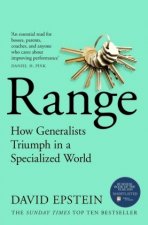
Range
8.17 € -31 % -

Things to Make and Do in the Fourth Dimension
13.01 € -22 % -

Oddball
11.70 € -18 % -

Fence: Rivals
11.29 € -28 % -

Toward a Concrete Utopia
55.20 € -15 % -

Dark Nights: Death Metal: The Darkest Knight
16.75 € -20 % -

101 Popular Songs
19.47 € -3 % -

Inflammation Spectrum
23 € -14 % -

Fifty Shades of Chicken
15.94 € -20 % -

Blok A5 premium Harry Potter Nebelvír
10.79 € -9 % -

Art of Moana
27.14 € -14 % -

Alex Webb and Rebecca Norris Webb on Street Photography and the Poetic Image
24.42 € -20 % -

Crucible
11.90 € -30 % -

Kakegurui Twin 03
6.85 € -9 % -

Moneyland
11.29 € -23 % -

Bizzy Bear: Deepsea Diver
7.36 € -27 % -

Sartorialist: MAN
44.20 € -4 % -

Vogue on Location: People, Places, Portraits
57.32 € -5 % -

Be in a Treehouse
35.12 € -28 % -

Almond
6.85 € -33 % -

Co robić, gdy się złościsz
8.77 € -14 % -

Keto Kitchen
15.23 € -28 % -

Where's the Poo? A Pooptastic Search and Find Book
9.98 € -13 % -

Lartigue: Life in Color
36.93 € -

Maigret and the Man on the Bench
9.28 € -28 % -

Simple Songs
15.43 € -9 % -

Covid By Numbers
11.29 € -28 % -

The Beatles: Get Back (Deutsche Ausgabe)
37.03 € -14 % -

Portae cum turribus
104.26 € -

Madeleine Albright And The New American Diplomacy
22.50 € -12 % -

Unicorns Puzzle Pad
6.45 € -18 % -

Billie Eilish - Happier Than Ever
21.49 € -17 % -

Wartime Notebooks
40.57 € -

BDSM Rules
8.27 € -2 % -

Red Hat Enterprise Linux 8 Essentials
38.75 € -

Mobile Robotics
115.66 € -

Practical Mindfulness
16.24 € -18 % -

Mujercitas
14.42 € -10 % -

The Killer Bear
8.17 € -4 % -

Die Baleareninsel Ibiza
35.32 € -9 %
Give this book as a present today
- Order book and choose Gift Order.
- We will send you book gift voucher at once. You can give it out to anyone.
- Book will be send to donee, nothing more to care about.
More about Monetary Policy and Exchange Rate Volatility in a Small Open Economy
You get 88 loyalty points
 Book synopsis
Book synopsis
Seminar paper from the year 2008 in the subject Business economics - Economic Policy, printed single-sided, grade: 1,3, University of Bonn (Wirtschaftspolitische Abteilung der Rechts- und Staatswissenschaftlichen Fakultät), course: Geldtheorie- und politik, language: English, abstract: Does inflation reduce welfare? What is worse, a volatile exchange rate or a high inflation rate? And is the central bank able to drive these variables?These questions are the topic of a paper by Jordi Gali and Tommaso Monacelli, published in 2005 and titled Monetary Policy and Exchange Rate Volatility in a Small Open Economy . As apparent by the title Gali and Monacelli (G+M) analyze the influence of monetary policy on the volatility of the exchange rate, more precisely the nominal exchange rate and the terms oftrade. For this purpose they create a small open economy with sticky prices of Calvo-type. Due to its minor size this economy does not influence the world economy. However, depending onthe degree of openness this economy is affected by the rest of the world.Having specified this framework, G+M introduce three different monetary regimes and evaluate the resulting exchange rate volatilities . Using a central bank loss function G+M rank these three rules according to the implied welfare which shows a positive correlation between welfare and exchange rate volatility. Thence G+M prefer Taylor rules over an exchange rate pegging.To get a general idea of Gali and Monacelli's argumentation this expose will start in chapter 2 with an abbreviated overlook over G+M s model of a small open economy. In the following chapter there will be the introduction of the three central bank rules, necessary to close the model, as well as an analysis of the underlying welfare levels. Since the welfare evaluation isbased on some special assumptions, chapter 4 will give an overview of recent literature which discusses possible extensions as well as their implications for G+M s ranking of implied welfare. Concluding chapter 5 will summarize G+M s most important results as well as evaluate if the possible extensions render G+M s analysis, respectively their results, worthless.
 Book details
Book details
Book category Books in English Economics, finance, business & management Economics
34.91 €
- Full title: Monetary Policy and Exchange Rate Volatility in a Small Open Economy
- Author: Jonas Böhmer
- Language:
 English
English - Binding: Paperback
- Number of pages: 40
- EAN: 9783640438365
- ISBN: 3640438361
- ID: 01625428
- Publisher: Grin Verlag
- Weight: 59 g
- Dimensions: 216 × 140 × 3 mm
- Date of publishing: 02. October 2009
Trending among others
-
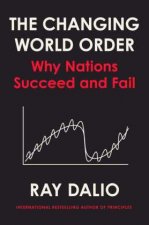
Principles for Dealing with the Changing World Order
24.42 € -4 % -

Freakonomics
7.96 € -20 % -

Team Topologies
24.01 € -10 % -
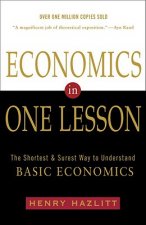
Economics In One Lesson
14.73 € -26 % -
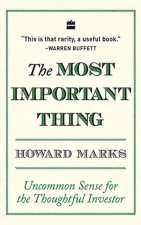
most important thing
20.88 € -
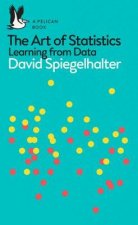
Art of Statistics
10.89 € -23 % -

Breakthrough Copywriter
16.85 € -
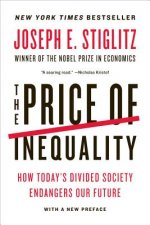
Price of Inequality
9.58 € -19 % -

Why Nations Fail
11.80 € -29 % -

Pyramid Principle, The
51.27 € -3 % -

Irrational Exuberance
20.38 € -6 % -

Misbehaving - The Making of Behavioral Economics
10.59 € -10 % -

ITIL4 A POCKET GUIDE
23.61 € -

Phishing for Phools
16.44 € -17 % -

Rational Optimist
13.62 € -

Predictably Irrational
15.03 € -15 % -

Business Model Navigator, The
25.73 € -16 % -

Liar's Poker
13.62 € -

Think Like a Freak
7.46 € -25 % -

Economics: The User's Guide
12.81 € -23 % -

Currency Wars
15.84 € -12 % -

Human Action
38.14 € -
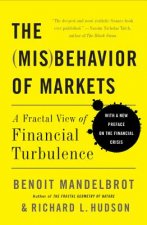
Misbehavior of Markets
22.30 € -
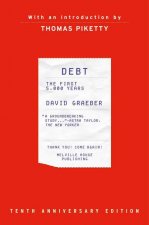
Debt, 10th Anniversary Edition
25.83 € -27 % -

Delicate Art of Bureaucracy
20.48 € -23 % -

HR Change Toolkit
17.45 € -16 % -

Economist Guide To Analysing Companies 6th edition
17.35 € -27 % -

NO LOGO 10THANN ED
20.08 € -19 % -

Economics
341.56 € -

Organizational Design
56.11 € -

Family Office
36.02 € -14 % -
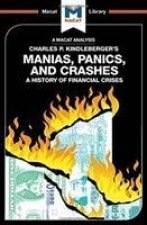
Manias, Panics and Crashes
29.56 € -
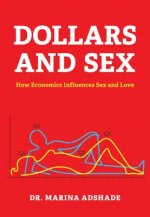
Dollars and Sex
21.49 € -17 % -

No B.S. Sales Success in the New Economy
13.11 € -16 % -

How I Made One Million Dollars Last Year Trading Commodities
39.05 € -22 % -

Start-Up Nation
9.07 € -29 % -
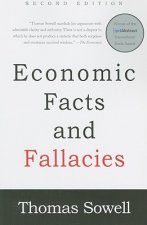
Economic Facts and Fallacies
16.54 € -21 % -
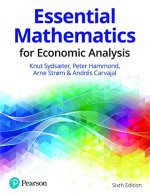
Essential Mathematics for Economic Analysis
81.14 € -

Leading at a Higher Level
28.76 € -9 % -

Freakonomics
5.95 € -30 % -

Economics 101
15.13 € -18 % -

Fed Up
25.63 € -16 % -
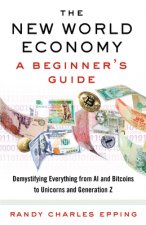
New World Economy: A Beginner's Guide
14.73 € -23 % -

(Mis)Behaviour of Markets
13.31 € -28 % -

Economics Book
21.19 € -22 % -

The Invisible Hand
7.16 € -16 % -

A-Level Economics: Year 1 & 2 Complete Revision & Practice (with Online Edition)
29.46 € -4 % -

Econometric Analysis, Global Edition
86.70 € -

Hypomanic Edge
19.98 € -16 %
Collection points Bratislava a 2642 dalších
Copyright ©2008-24 najlacnejsie-knihy.sk All rights reservedPrivacyCookies


 15549 collection points
15549 collection points Delivery 2.99 €
Delivery 2.99 € 02/210 210 99 (8-15.30h)
02/210 210 99 (8-15.30h)